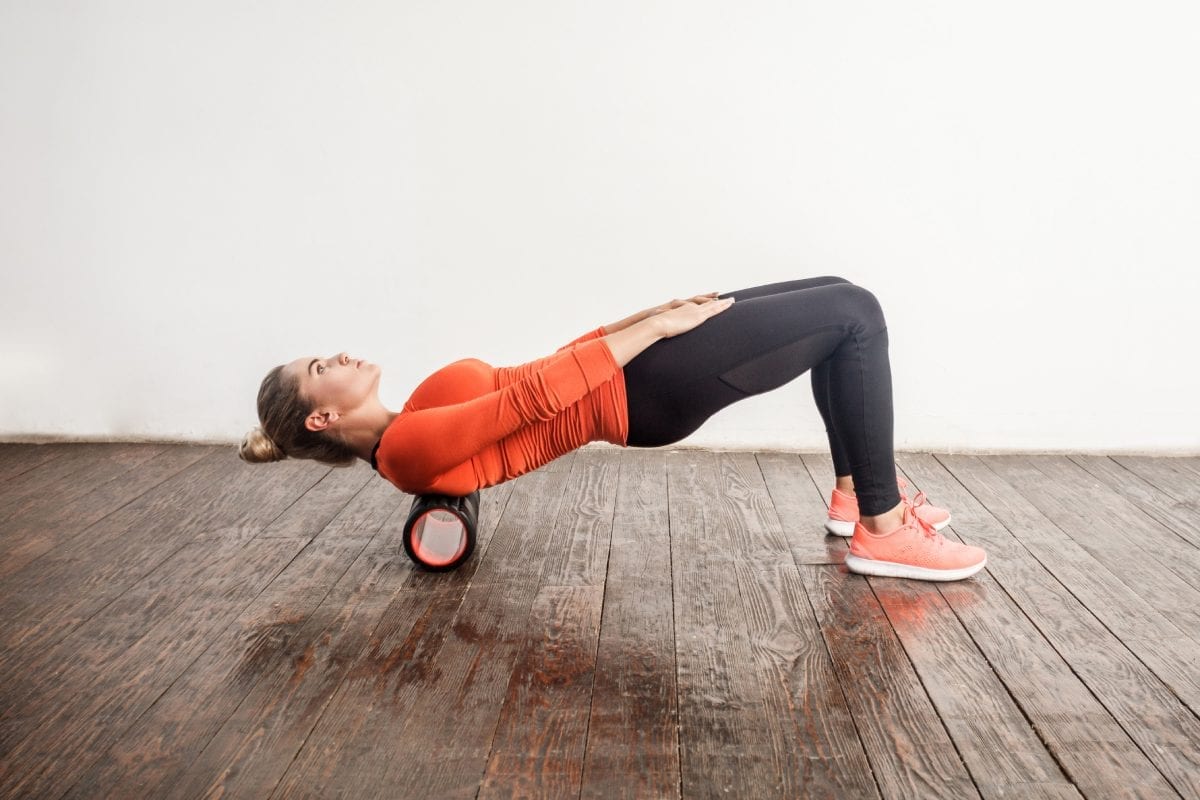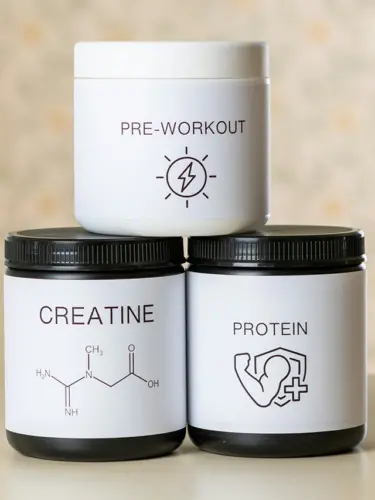Last Updated on August 2, 2024 by Nicole
Due to the restrictions of the pandemic, many of us have been living a more sedentary lifestyle than usual these past few months, as physical activity has been limited for even fitness enthusiasts. After being comfortable for that long, I’m sure some of you might be wondering how you can find the right motivation to help get off your couch and become more active.
Of course, it’s easier said than done. You might recall a time when you took a few weeks off and then tried to get back to the gym after your vacation was over. I bet the first few training sessions were taxing, leaving you sore for days (been there)! You probably weren’t able to just pick up where you had left off, which is okay. The most important thing is not to give up and to take it one step at a time.
If you were one of the lucky few who had access to a facility or equipment during lockdown and still trained with the same intensity, then what I’m about to say might not necessarily apply to you. Actually, it’s great for you to keep up that same energy and dedication!
As for the rest of you who were not as fortunate or active for the past few months, your goal when going back to the gym should be to focus on safety and injury prevention. This can be achieved through a well- designed training regimen with gradual increases in intensity.
I’ve put together a few tips you can follow to make sure you’re back to the old you in no-time and in a safe manner. The last thing you want is to get injured and to go back to being stuck at home for more weeks just to recover.
Be Prepared Mentally

Your mindset and mental readiness are more important than the physical aspect of training. Before walking in the gym and picking up dumbbells, you have to remember one thing: you’re not where you were. That probably means you’re not as strong or fast as you were, but that’s okay.
When we stop being active, our physical condition declines. This phenomenon is known as “deconditioning”. A few weeks or months of inactivity will affect your muscular endurance and strength, but that doesn’t mean you can’t regain them back. Once activity is resumed, your body will positively respond to training. You’ll become stronger and more fit both physically and mentally. So clear your head of negativity and don’t be too hard on yourself. Set short-term, realistic, and achievable goals and most importantly enjoy the journey!
Slow and Gradual Increments Are Key

Remember, the process of building muscle and losing fat is a marathon, not a race. Start slowly and let your workout intensity become gradually higher. One very important piece of advice I can share with you is “leave your ego at the door”. It’s okay if your squat or bench press aren’t what they used to be. Understanding that is crucial, since if you attempt a lift without both physical and mental readiness, you’re just going to end up causing yourself physical injuries and emotional setbacks.
Your muscles are most probably atrophied, meaning that they aren’t as big and as strong as they once were. Therefore, they cannot produce the same force they used to. But don’t worry: our muscles also have something called “muscle memory”. Basically, this means it is easier for your muscles to bulk up and rebuild strength as you resume training when compared to when you first started working out.
Finding the right balance
The key is to find the perfect balance in your training. The way to do that is to adjust your training volume and intensity. What I mean by that is to organize your training days, sets, and reps performed as well as the weights you’re going to be using. If you used to train five times a week before with a volume of 150-200 reps/muscle, I would recommend starting with two or three full body sessions a week with 30-40 reps/muscle group for the first few weeks.
You can gradually add a training day to your schedule as your body shifts and adjusts to your old regiment. As for intensity, surely you won’t be lifting as many weights as you were before. Don’t finish your set with nothing left in the tank. Let’s say you’ve done 10 reps bench pressing and feel that you still got two-to-three reps in you; it’s okay to stop at 10. Don’t push too hard during the early stages. If you go too hard too fast, you’ll cause your muscles more damage than good. (Also expect to become sore for days!)
Proper Warm-up
I cannot stress this point enough. You should implement a proper warm-up every session. When you warm up, you’re preparing your body and your nervous system for the upcoming work. It also allows you to address any muscular imbalances you might have in your body. Working on flexibility, mobility, and stability are all prerequisites for error and pain free movements. The better the warm-up, the less susceptible to injury you’ll be.
I recommend foam rolling for one to two minutes per major muscle group. Also, use a resistance band for core and glute activation exercises before lower body compound lifts. Make sure to also warm up with upper body rotator cuff and shoulder stability exercises before any pressing/pulling movement.
Staying Motivated

Another important mental factor when it comes to getting back into working out is staying motivated. We’re creatures of habit: we like having a routine and sticking to it. It’s completely normal and understandable to lose the motivation to exercise after our entire routine and concept of “normal” changed due to the pandemic. However, it doesn’t have to stay that way.
You might have gained some weight over the past few weeks, and that’s okay. Remember what drove you the first time, so stay positive and surround yourself with positive people who will motivate you on this journey. Remember: motivation starts from within; it’s the desire in you to change for the better. If the mind can perceive it, the body will achieve it.
Nutrition and Recovery

Similar to having a proper warm-up in your training regiment, proper nutrition and recovery are key factors in helping you achieve your body goals. Start incorporating cool-downs at the end of your workouts, especially since your body is now becoming more sensitive to the mechanical stress placed on it through training. By doing so, you can jump-start your body’s tissue repairing mechanism by increasing blood flow to the working tissue.
I recommend one-to-two minutes of foam rolling and static stretching, holding each stretch for 30-40 seconds. As for the nutritional aspect of recovery, you probably heard the phrase that working out is 30% training and 70% diet. This should give you some idea about the importance of proper nutrition, fueling your body for optimal performance and recovery. Consuming a 3:1 ratio of carbs to protein post-workout is ideal. Another fact to keep in mind, physiologically speaking, is that the major constituent of muscles is water, so keeping yourself well hydrated is crucial. Two-to-three liters of water a day is a good place to start.
The Bottom Line
If you’re wondering how to get back into working out, the answer is simple: you have to want it! Your true motivation comes from within you and is fueled by your family and friends’ support. It’s important to understand that as humans, we tend to fall back and become less active from time to time. However, the key is to always bounce back and jump into an active lifestyle, which is crucial for both our mental and physical health.
Trust me: following the aforementioned simple guidelines will do you wonders once you decide to re-embark on your fitness journey. Always make sure not to ask too much of your body too soon; this is really important for minimizing the risk of injury during your training. Remember, there are no shortcuts when it comes to your health. The road is long and demanding, but the results are worth it!
3 Amazing Set Activewear Brand Picks for the Summer
We all know that moving our bodies is ideal for our wellness, but sometimes we want…
A Beginner’s Guide to Creatine Gummies: Empowering Wellness
In the pursuit of optimal health and fitness, individuals often seek effective strategies to enhance…
Core Ball Exercises: 5 Creative Ways You Can Tone Your Stomach Effectively
Core Ball Exercises: 5 Creative Ways You Can Tone Your Stomach Effectively If you want…
8 Common Fitness Myths: Unveiling the Truth Behind Exercise Misconceptions
Unveiling the Truth Behind Exercise Misconceptions! The world of fitness has many dos and don’ts….
9 Healthy Postpartum Diet Tips for Post-Pregnancy Weight Loss
Having a baby and becoming a mother are some of the most amazing experiences that…
8 Highly Effective Ab Workouts Using Just Your Body Weight
With summer around the corner, a goal for fitness enthusiasts and beginners alike is to…





